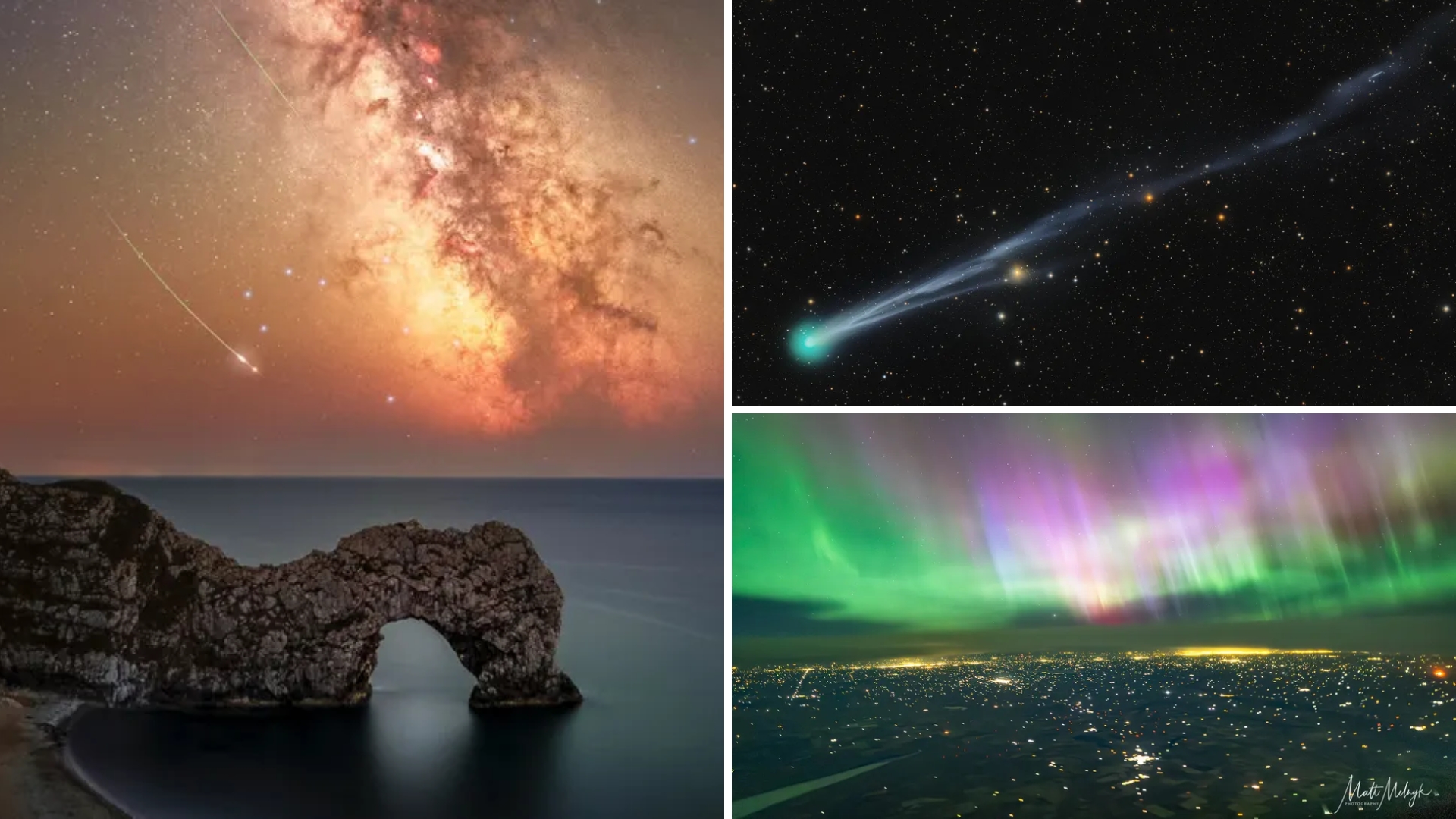Mysterious flashes of radio light come in two 'flavors,' new survey finds
They might provide a new way to see the cosmos.

Every two minutes, a mysterious flash of radio light explodes somewhere in the sky and fades back into darkness within a matter of milliseconds. Astronomers first noticed the bursts in data archived from 2007 and have spent the decade or so since carefully stockpiling examples of the fast radio bursts, or FRBs, looking for patterns that might reveal their origins. Now, they have a whopping 500 new bursts to study.
On June 9, an international research collaboration released the first FRB catalog from the Canadian Hydrogen Intensity Mapping Experiment (CHIME) in British Columbia, more than tripling the number of known FRBs in a single day. The new dataset lends strong support to the notion that two distinct types of FRBs dot the radio sky, and it foreshadows a future where astronomers leverage FRBs to illuminate the most distant reaches of the universe.
"This represents a new phase in FRB science," Kiyoshi Masui, an Massachusetts Institute of Technology astrophysicist and representative of the CHIME collaboration, said at a news briefing.
Related: The 12 strangest objects in the universe
An FRB-finding machine
CHIME was not initially designed to become the world's leading FRB hunter. Astronomers originally planned the machine to use the jitters of dim hydrogen atoms to chart the cosmos's matter out to unprecedented distances. But after the Canadian government funded the $9 million machine, researchers realized it was perfectly suited to solving the emerging mystery of FRBs.
The sky flashes with FRBs all the time — about 880 times a day, according to the CHIME collaboration's new results. But unless astronomers happen to have a large radio dish trained on exactly the right random point in the sky at exactly the right moment, a burst will go unseen.
CHIME, however, has a cosmic perspective. The telescope's broad receivers (more half-pipes than dishes) pick up radio waves from much of the sky overhead at once, and Earth's rotation points it in different directions. A $4.5 million supercomputing cluster dedicated to FRB hunting, added part-way through the design process, digitally focuses the telescope on thousands of points at once.
Breaking space news, the latest updates on rocket launches, skywatching events and more!
Previously, researchers tended to analyze FRBs on a case-by-case basis. The catalog now opens the door to studying bunches of FRBs at once, "transforming this whole field into big data science," Mohit Bhardwaj, a CHIME collaboration member from McGill University in Montreal, said at the news briefing.
Patterns in the randomness
Most astrophysicists think FRBs emanate from magnetars, which are one of the weirdest things a star can become when it dies. Magnetars are highly magnetized versions of the stellar corpses known as neutron stars, making them some of the densest and most magnetic objects in the universe. Only a body packing so much mass and magnetic intensity into such a small package could be powerful and nimble enough to beam out the brief bursts, theorists have reasoned. Then in 2020, CHIME caught a magnetar mid-burst in our own galaxy. Still, exactly how magnetars are churning out radio waves is anyone's guess.
Related: The 15 weirdest galaxies in our universe
"There are a plethora of theories, but nothing that tells us which ones could be right and which could be wrong," Masui said.
The CHIME catalog all but confirms a long-held suspicion: Not all FRBs are alike. Astronomers have identified a small minority of FRBs that occur repeatedly from the same spot in the sky, dubbed "repeaters." Of the 535 newly revealed bursts, 61 flashes came from 18 repeat offenders.
The astronomers also found that repeaters look intrinsically different from one-off bursts. One-time FRBs are brief and tend to shine with a rainbow of radio waves, while repeat bursts linger and tend to show up as a single radio hue. The distinction hints that magnetars could have at least two different ways of spitting out radio waves.
Across the universe
Regardless of what's causing FRBs or how, researchers are already thinking about how to put the flashes in the dark to work. The hundreds of bursts seem to be coming from all directions, as opposed to, say, aligning with the Milky Way, That's a sign that the cosmic lighthouses emitting them are scattered across the cosmos, with many coming from hundreds of millions to billions of light-years away.
CHIME also picks up a quality of FRBs called dispersion, a measure of how the radio frequencies of a burst have spread out as its photons travel between galaxies. This separation grows as FRB photons plow through the thin plasma that fills space (like white light separates into a rainbow as it passes through a prism). In this dispersion, each FRB records how much matter it encountered on its journey, much as a car's tires carry a history of the roads they have traveled.
As CHIME's FRB catalog grows, astronomers hope they will be able to use it to create a map of the cosmos's matter on the largest scales.
"We think that [FRBs] are going to be the ultimate tool for studying the universe," Masui said.
Originally published on Live Science.

Charlie Wood is a freelance journalist covering physical sciences both on and off this pale blue dot. He contributes to Space.com and LiveScience, as well as Popular Science, Scientific American, Quanta Magazine, and others. These days he writes from New York but in previous lives he taught physics in Mozambique and science English in Japan. Find him on Twitter @walkingthedot.

